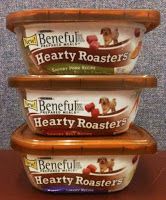The USPTO refused registration of the mark SAVORY ROASTERS for "pet food; pet treats" [SAVORY disclaimed], deeming the mark likely to cause confusion with the registered mark HEARTY ROASTERS for "pet food." Applicant argued that ROASTERS is "clearly designed to be suggestive of the goods," and thus is not the dominant portion of the marks. How do you think this appeal came out? In re DPC Pet Specialties LLC, Serial No. 86951910 (June 6, 2018) [not precedential] (Opinion by Judge Linda Kuczma).

The Goods: Because the goods are in part identical, those overlapping goods must be presumed to travel through the same, normal channels of trade to the same classes of purchasers. Moreover, as to applicant's pet treat products, Examining Attorney Gidette Cuello submitted evidence showing the same entity commonly manufactures or sells pet treats and pet food under the same mark. Thus these factors strongly favored a finding of likelihood of confusion.
The Marks: The Board found that the terms SAVORY and HEARTY do not detract from the similarities of the marks. Both words are adjectives used to favorably describe food or its attributes. While the two words may have different connotations, they have little, if any, source-identifying significance because they are descriptive or highly suggestive of pet food products - as reflected in applicant's disclaimer of SAVORY and as evidenced by the submitted dictionary definitions.
Applicant argued that "the shared element of the mark[s] - ROASTERS - is clearly designed to be suggestive of the goods being sold," and therefore that the Examining Attorney was wrong in concluding that ROASTERS is the dominant portion of applicant's mark.
The Board observed that it must consider the marks in their entireties. Although the leading descriptive elements in the marks differ visually and aurally, "consumers familiar with Registrant's HEARTY ROASTERS pet food may well conclude that Applicant's SAVORY ROASTERS pet food and pet treats are a new line of pet food from the maker of HEARTY ROASTERS pet food."
Moreover, the Board observed once again, when the goods of the parties are identical or as closely related, a lesser degree of similarity between the marks is necessary to support a finding of likely confusion.
The Board concluded that the marks are sufficiently similar in appearance, sound, connotation, and commercial impression for confusion to be likely.
And so the Board affirmed the Section 2(d) refusal.
Read comments and post your comment here.
TTABlog comment: Applicant did not provide any evidence that the term ROASTERS has descriptive significance when applied to pet food.
The content of this article is intended to provide a general guide to the subject matter. Specialist advice should be sought about your specific circumstances.
